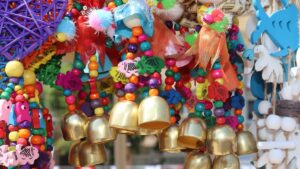This is one way to invest in the Chinese tourist spike in 2019

Pic: Godji10 / iStock / Getty Images Plus via Getty Images
Special Report: China already provides the biggest number of tourists coming into Australia and that figure is expected to grow further in 2019.
In the year to September 2018, 1.08 million Chinese tourists flocked to Australia, accounting for a major chunk of the 9.2m total counted by Tourism Australia in the 12 months to October.
The government organisation says they’re big spenders too, splashing out about $8000 each when they travel to Australia, compared with $5000 by other international visitors.
“China also accounted for 81 per cent of the growth in spend for the year,” Tourism Australia said.
“Trip spend from China was more than three times that of the US.”
But while the official bodies haven’t yet put a figure on how many Chinese tourists Australia might see in 2019, other businesses believe this year will be even bigger.
Mediland Pharm managing director Yesh Mudaliar said he wouldn’t be surprised to see Chinese tourist numbers rise significantly this year.
Given the demand from Chinese travellers to Australia, the company expects to capture more tourist dollars and see greater numbers of shoppers within their store.
Mediland Pharm saw 50,000 travellers to their stores in FY 2018.
Finder.com.au’s Head of PR Bessie Hassan believes total tourist numbers could top 10 million this year, with the majority of those coming from China, according to a report in News.com.au.
Dollar makes Australia cheaper for the Chinese
A diving dollar could be a big drawcard for Chinese tourists.
While the dollar has plunged against the US dollar and other major currencies, it was relatively stable against the Yuan during 2018.
But it started dropping in December, making a holiday to Australia much more cost effective for Chinese visitors this year.
Tapping the tourists directly
What this means is the handful of ASX companies, which benefit from Chinese shoppers — the locals and the tourists looking for Australian-made products– are likely to see an equivalent revenue boost if they are prepared.
Soon-to-list Mediland Pharm is already prepping for the influx with an IPO to raise the capital they need to cater to the rising number of Chinese visitors.
Mediland Pharm launched a $12.5m-15m IPO last year, offering investors shares at 20c.
They’ve been selling in-demand Aussie products to Chinese tour groups through specially designed retail stores in Sydney, Melbourne, and Surfers Paradise since 2002.
And now they want to kick that strategy up a notch.
The company has turned a profit for the last three years, making $3.7m in 2018. It has no debt and the initial market cap at the IPO price will be $62.5 million.
It says 50,000 Chinese visitors walked through its three stores in 2018, all of whom were on organised tours.
But the Chinese tourism market is dynamic and although the tour group business is extremely profitable Mediland Pharm is not resting on its laurels.
Mudaliar says that funds raised will fuel three key expansion strategies: expanding its current retail stores, building an online platform, and developing its own branded of products.
The e-commerce platform would cater to current customers, capturing more repeat business and referrals from current customers to their friends and family.
When it comes to retail expansion, Mediland Pharm is exploring the benefits of adding stores to hot zones for Chinese travellers, such as Cairns.
And, they are looking at building a range of Australian-made, TGA-approved, house-branded products in the key categories of healthcare supplements and cosmetics.
Mediland Pharm is a Stockhead advertiser.
This advice has been prepared without taking into account your objectives, financial situation or needs. You should, therefore, consider the appropriateness of the advice, in light of your own objectives, financial situation or needs, before acting on the advice. If this advice relates to the acquisition, or possible acquisition, of a particular financial product, the recipient should obtain a disclosure document, a Product Disclosure Statement or an offer document (PDS) relating to the product and consider the PDS before making any decision about whether to acquire the product.
UNLOCK INSIGHTS
Discover the untold stories of emerging ASX stocks.
Daily news and expert analysis, it's free to subscribe.
By proceeding, you confirm you understand that we handle personal information in accordance with our Privacy Policy.








